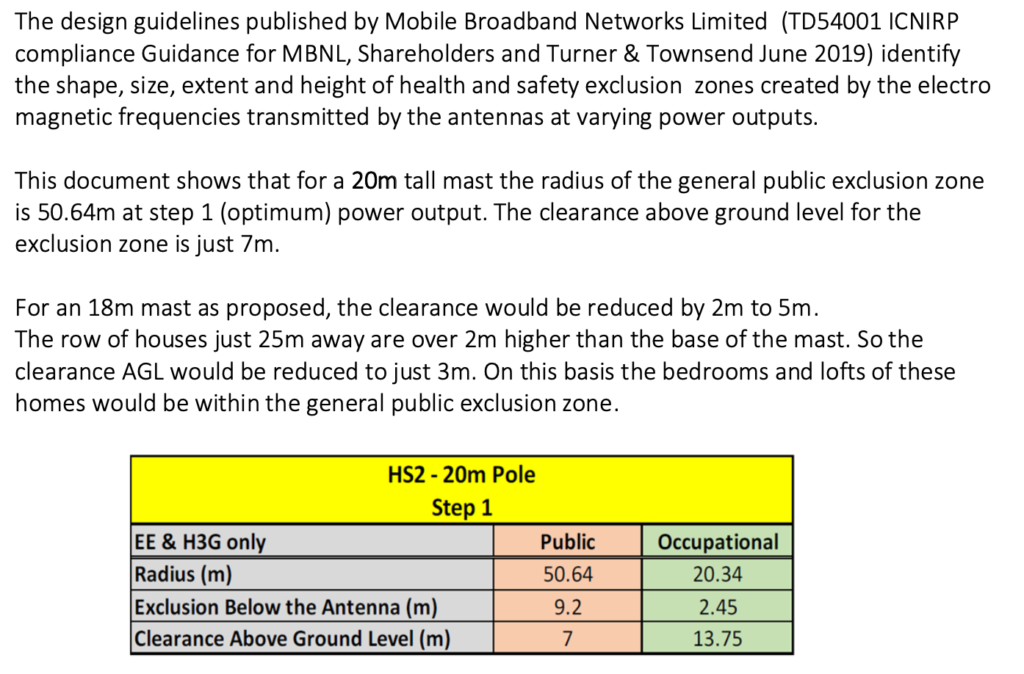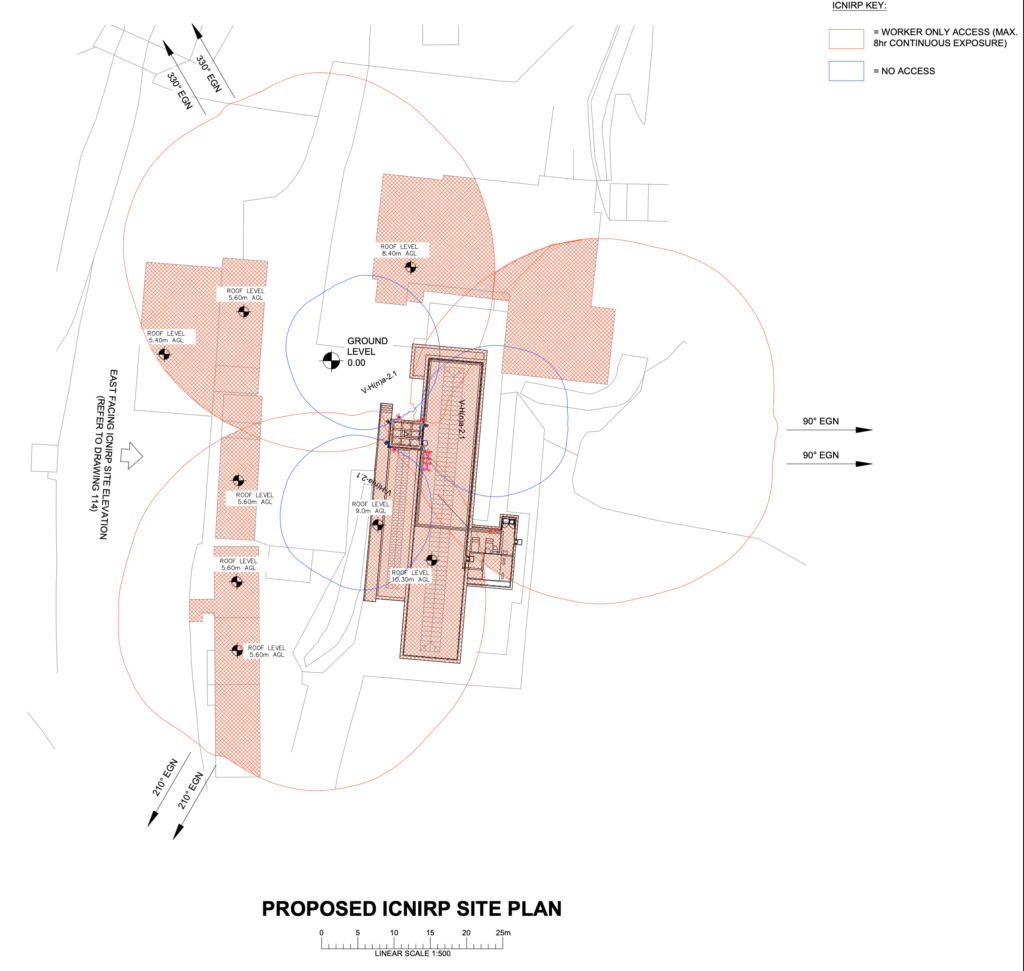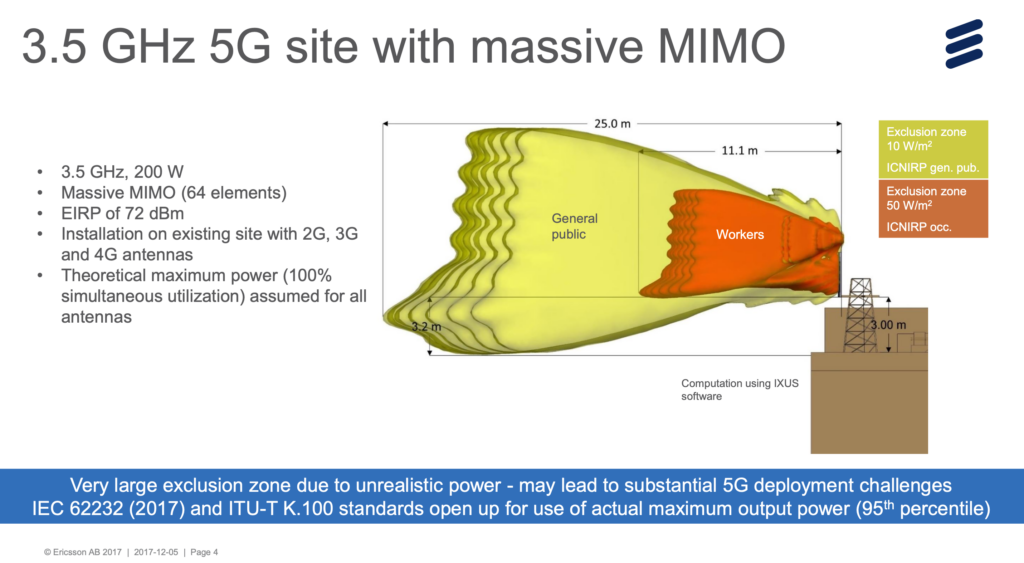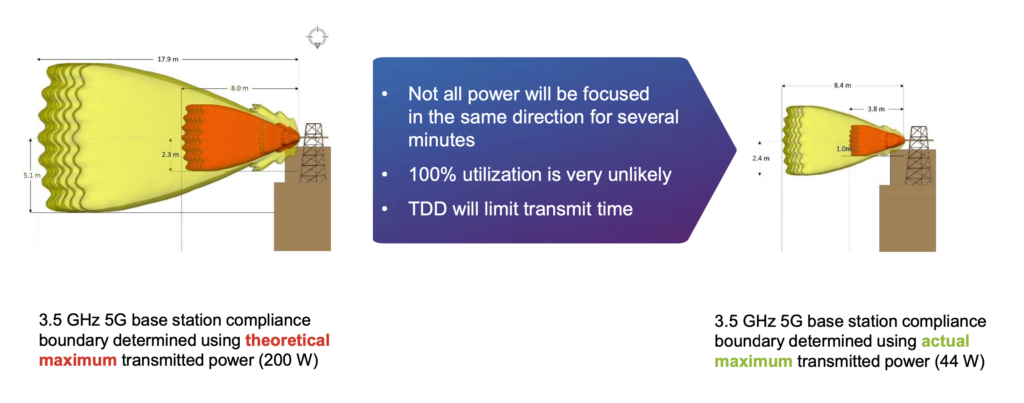What are RF radiation exclusion zones?
An exclusion zone is a region around an RF transmitting antenna where the general public or occupational workers are not allowed to enter or remain for protracted periods of time because the regulated RF EMF exposure levels would be exceeded inside this zone.
The area within which the RF field values (power density) radiating from the antennae exceed the International Commission on Non-Ionizing Radiation Protection’s (ICNIRP) Public reference levels is referred to as the Public exclusion zone. Where it exceeds the ICNIRP Occupational reference levels is known as the Occupational exclusion zone.
The reference levels are the power density values time averaged over a 6min/30min cycle. (This hides spikes in power, and it is the spikes which also cause a stress response)
The guideline max Public exposure (power density) within the zones is supposed to be 61 v/m or 10 W/m2 (increases to 50W/m2 for Occupational)

Are ‘5G’ masts any different ?
A key feature of the 5G wireless standard is that it will use beam-forming technology, which allows for the RF signal to be focused to the region where it is needed (e.g. to a person using a mobile phone), rather than being spread out over a large area.
We are re-assured “…the ICNIRP (2020) restrictions have been set to ensure that the resultant peak spatial power will remain far lower than that required to adversely affect health. Accordingly, 5G exposures will not cause any harm providing that they adhere to the ICNIRP (2020) guidelines.”
https://www.icnirp.org/en/applications/5g/5g.html
The idea of having focused beams directed at you is not re-assuring, and remember Jevans paradox that will guarantee that all the space between your beams will be filled by other peoples beams since the technology boasts the ability to serve millions more devices than before!
Illustration examples
Typical exclusion zone map. This shows a radius of about 50m, but it can vary from 10-50m depending on the antenna type and specification. Average c.25m radius outwards. Typically you allow a vertical zone of 5m above and below the horizontal axis as well.
You need to ask the operator for their calculations for each site however. Indeed, the Council should be doing this to check the ICNIRP Compliance certificate produced under NPPF policy 117c.

5G MIMO antennas could/should have larger Zones as indicated here. They should always be mapped for maximum transmitted power. ICNIRP claim that 5G will not need larger zones, but Ericsson are suggesting that they will.



This information should be sent to all councils as they are ignoring any safety regulations regarding the towers – many are close to schools – along with the LED lights, which are also a health hazard.